Invaders of the planet Earth
2005/03/01 Galarraga Aiestaran, Ana - Elhuyar Zientzia Iturria: Elhuyar aldizkaria
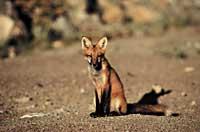
The invaders of planet Earth are microorganisms, plants, animals and fungi that, coming from elsewhere, achieve their naturalization and dominion of the new earth. However, this directly influences the original living beings of the place. In fact, invasive species occupy the second place among agents that threaten the biodiversity of a place. In the first place is the loss of habitat caused by human activities.
It is not the only classification, it also exists between the invaders themselves and another. In 2000, the World Organization for the Conservation of Nature selected the most dangerous invasive alien species in the world and published a list with them. The list has now been renewed and has been republished. On the internet they have put it on www.issg.org/booklet.pdf .
However, the goal of the organization is not so much to make a classification, but to draw attention to the damage that these species generate. Therefore, there are more species that deserve to be on the list, but having to choose a fabric, they have only included the most harmful and representative.
Nearby and distant examples
Some of the species listed in the list are well known and cause serious damage to the ecosystems here. For example, there is the story (Myocastor coypus), which was brought from South America to fight the European nurseries and which has now taken over the rivers of the Bidasoa-Baztan area.
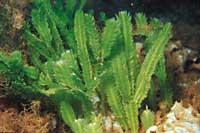
The grass of the pampas (Cortaderia selloana) has traveled a similar path. This plant is not mentioned in the world list, but there is no doubt that at least in Euskal Herria it is invasive. It is actually from Pampa and from there it was brought to decorate the gardens. However, the seeds extend with the wind and the vegetation easily colonizes the cultivated and degraded soils. Thanks to this, and using fast means like motorways, much has spread. In recent years it can be seen in any margin, especially on the coast.
Both the story and the grass of the pampas are very widespread here and are considered invasive species, but on the list there are many others that do not generate problems in Euskal Herria and that deserve to be known. And it is that they clearly demonstrate to what extent they are able to cause damage. One of these species is the snake that appears highlighted in the list.
Boiga irregularis is the scientific name of this snake, which, being Australian, Indonesia, from Papua New Guinea and the Solomon Islands, has managed to reach Spain, the United States and Hawaii, among other countries. Unlike the story and grass of the pampas, the man has not intentionally entered these territories, but has arrived by surprise hidden between the cargo carried by the ships and the planes.
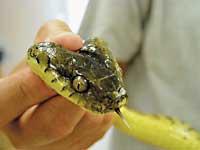
The snake was known in the 1970s. Between 20 and 25 years earlier, on a military plane, he arrived on the island of Guam, where he multiplied enormously, since he had no predators and yes big prey. It caused considerable ecological and economic damage: it eliminated most of the island's bird species and caused great discomfort in the electricity grid. It is currently accused of a threat to biodiversity in many other tropical islands.
But not only on earth, there are also invaders in the sea. One of the best known is the marine grass Caulerpa taxifolia. Of tropical origin, it reached the Mediterranean towards 1984. It seems that the Aquarium of Monaco threw some plants into the sea, without thinking that, being tropical, they could survive in more temperate waters. However, this plant not only survived but also managed to impose itself, destroying many habitats of the Mediterranean. It has recently been detected in the Pacific and the Atlantic.
Other invaders are less noticeable. Or better said, they are not so easy to see, but their influence. For example, the parasitic Cryphonectria fungus, although of microscopic size, has the ability to remove chestnut. It penetrates through the wounds of the tree creating chancros that prevent sweat circulation. The disease is easily diffused and is one of the factors that has caused the decline of chestnut in the Basque Country.
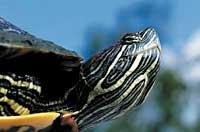
The first news about the disease dates back to 1904. At that time, the fungus came from Asia to the United States. Asian chestnut trees have some resistance, while Americans do not. Therefore, the fungus caused serious damage. In 1938 he entered Europe, first to the Italian Liguria and then to Switzerland, France and Spain. Meanwhile, of course, he ran over Euskal Herria.
In action
Aware of the need to take into account invasive species, several projects have been launched to detect and analyze the incidence of invasive species present in each place.
The GIPS, Global Invasive Species Programme, was created internationally in 1997. Its objective is to provide support and advice to governments and groups, including the United Nations Organization. It also brings together other groups and organizations, both institutional and non-governmental, as well as the GHG Invasive Species Group of Spain. Now, GEI works with the Spanish Ministry of Environment to complete the National Invasive Species Plan this year.
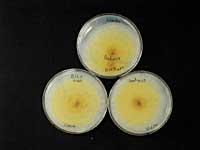
In Euskal Herria there is no joint plan, but some studies have been carried out and others are underway. For example, a catalogue of invasive plants was produced in Urdaibai and is now working on a project to combat invasive plants in the marshes.
In addition to the plants, animals such as apoarmed, wedges and American visons are also being studied. In fact, apoarcado is a clear example of the indifference of many people in this subject. The problem is that the Florida Galapagos (Trachemys scripta) is sold in animal stores and can be purchased by anyone. But there are those who release it when bored with the galapagos or any wetland. Leave it and ready.
But this has to do with that of Florida competes with the current galapagos from here. Consequently, the traveling galapagos is in danger of extinction in several places. Therefore, it is essential to inform and warn of the risks, which in most cases are caused by ignorance.
RABBIT ( Oryctolagus cuniculus )
Rabbit is a good example of the damage that can cause domesticated animals when they leave the farm and become wild. It is much listened to by the problems it poses in Australia long ago.
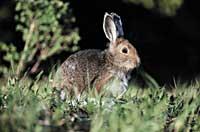
It is of European and North African origin, but is currently present on all continents, except in Antarctica and Asia. Compete with the fauna of the invading territories to obtain food and protection, which has caused the decline of many plants and animals in different places. On the other hand, it erodes the soil enormously, since it makes the deposits buried and eliminates the vegetation.
In the Auckland islands of New Zealand and many others, they have managed to end the rabbit, but in many other places they are still fighting. For this purpose, all types of physical, chemical and biological methods are used.
COMMON OR TENT ZAMO ( Cyprinus carpio )
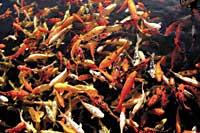
This fish was introduced in sweet waters from all over the world to grow and eat, or to decorate the ponds. The list is considered a pest, due to its enormous reproduction, water drag and the destruction of the habitats of many aquatic species.
SAD CAT ( Acridotheres tristis )
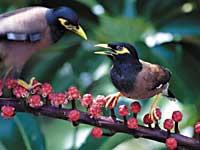
Of Indian origin, it has spread throughout the world. It was introduced mainly in agricultural lands, since it is able to reduce the number of insects. At the same time, it reduces biodiversity, as it competes for the holes suitable for nidification, leaving no place to small mammals and other local birds.
MIKONIA (Miconia calvescens)
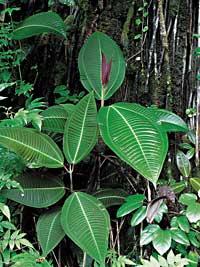
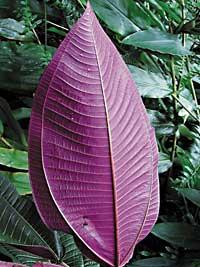
Native to South America, its beauty and spectacularity allow you to decorate its gardens. In 1937 it was planted in the botanical garden of Tahiti, but thanks to the birds that ate its fruits, it fled the garden and expanded through the natural environment. It now dominates two-thirds of the island. Elsewhere, the same has happened and has replaced the rainforest of several Pacific islands.




